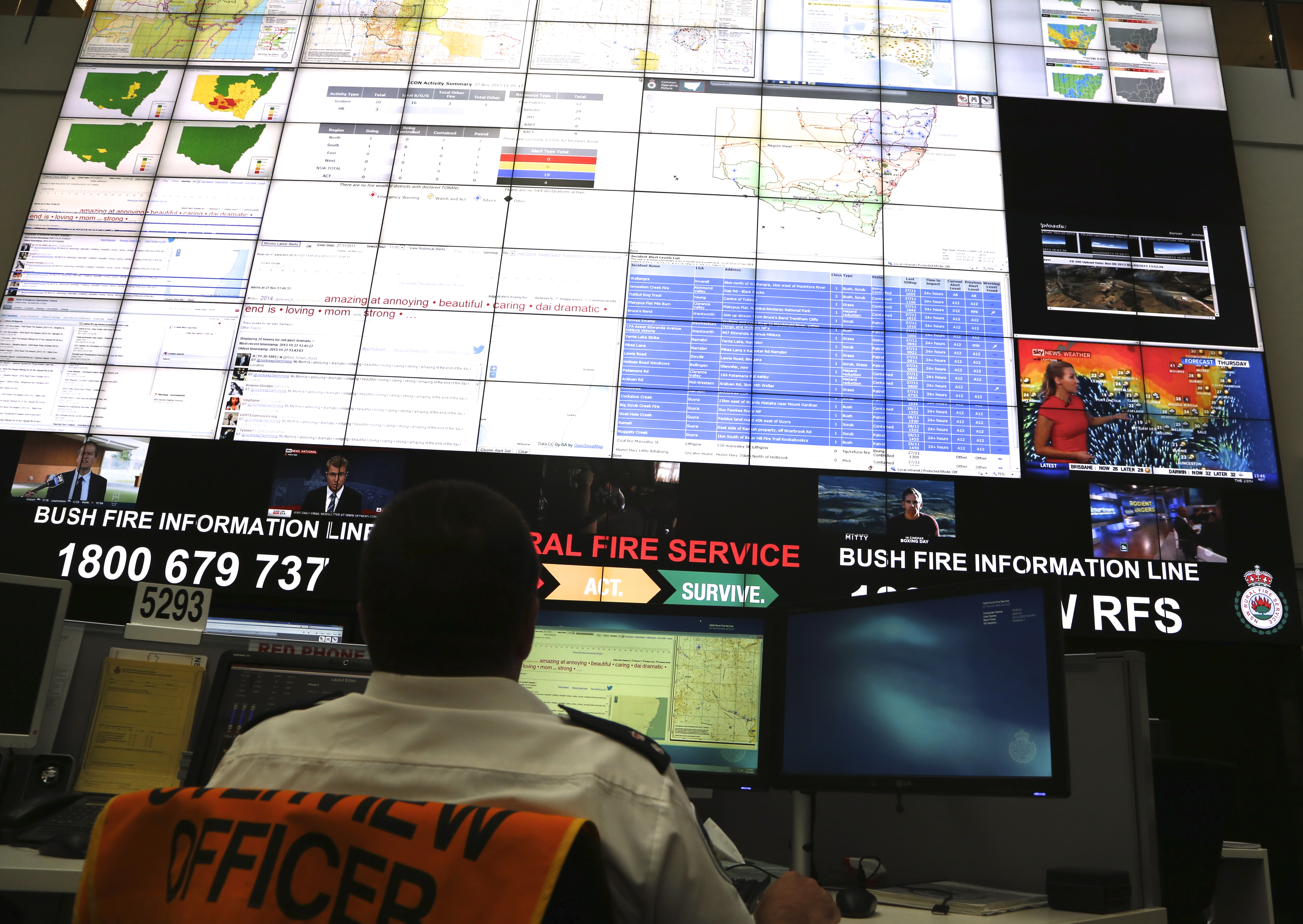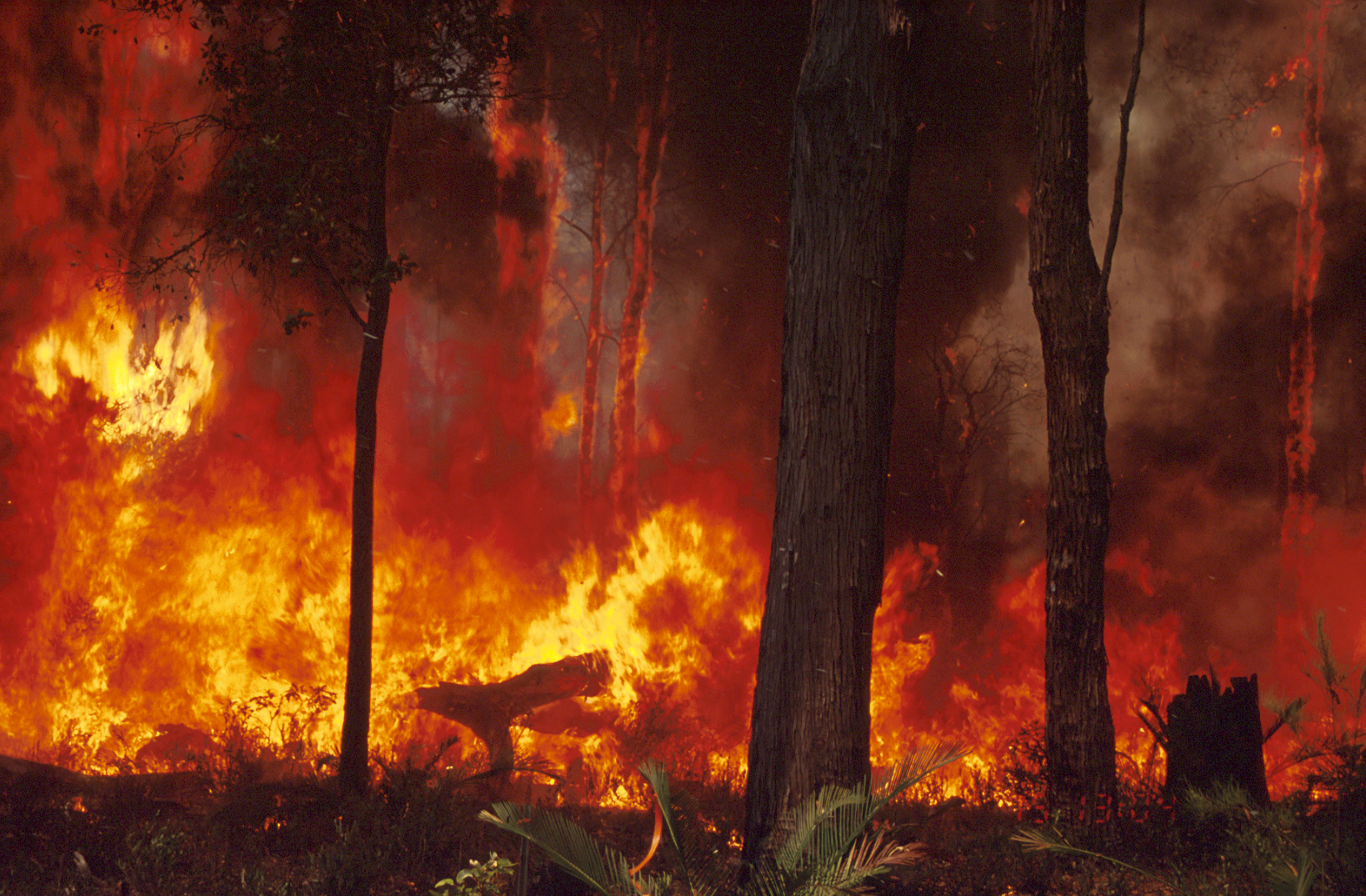By James Davidson
Cylons, Skynet, HAL 9000, Agent Smith, Haley Joel Osment. With characters like these, it’s no wonder people are concerned about the intelligent machines of tomorrow. But is there really any reason to fear? The truth is artificial intelligence (AI) is proving to be quite helpful…at least so far.

Intelligent machines could hold the key to smarter disaster management.
Clever, self-learning computer systems are helping us answer some of the world’s biggest problems – like how to predict bushfire hotspots. Unlike traditional methods where our best guesses are subjective, intelligent computers can use machine learning to replicate events based on advanced pattern recognition.
This month, our researchers revealed an AI system that could help us plan for future fires. It’s based on artificial neural networks (ANNs) which have actually been around since the 80s. These models allow computers to learn from data and provide a pretty accurate estimate of future events, eliminating many assumptions.
Today, ANNs are being used for deep cognitive imaging, an advanced form of pattern recognition. Based on this idea, our team of machine learning experts have built a deep cognitive learning system using ANNs to predict fire incidents across Australia. This could be the first step in providing information for emergency services planners to decide where to focus future firefighting resources.
So how does it work?
To put it simply, a computer is shown an image that represents a set of data. It’s then shown another image that has resulted from the first. The computer doesn’t know how or why the two are related, but it learns to estimate the outcome based on the first input. Essentially, the computer learns the cause-and-effect relationship so it can also predict the effect side of the equation in different scenarios.

Clever computer systems are helping us predict bushfire hotspots across Australia.
Our team trained their computer to learn the relationship between Australian climate maps and fire hotspots. To do this, they presented it with maps of Australia’s past climate using data from the Bureau of Meteorology. Next, they showed it maps of fire hotspots complied from satellite imagery data collected by NASA.
The computer wasn’t told how the two maps were related, other than the fact that the first map resulted in the second. But, almost magically, it was able to use the ANN to learn how to reproduce the fire maps.
Then, they got even trickier. They showed the computer a scenario based on Australia’s climate between 2001 and 2010. It was able to replicate the real world occurrence of fire hotspots with 90 per cent accuracy at the 5 x 5 kilometre scale. Not bad!
It’s early days for this AI, but unlike the scary smart machines of film fiction, this work poses no threat to human life. Instead, it could go a long way towards saving lives by improving our understanding of how different climate scenarios impact fire regimes across Australia.
We’re also working on a suite of other smart tools for disaster management and recovery. Learn more in our media release.
***
November 27-28 is the Building a System of Systems for Disaster Management event in Victoria. We’re looking at how Australia’s key agencies can improve the way they access vital information during emergencies.


7th August 2017 at 4:52 am
4 years later, British Columbia is burning down and the air pollution caused by these fires really dwarth in size the fuel we would of burned to monitor these great forests. Ancient forests are now threatened.
4th January 2014 at 6:10 pm
Its how we learn actually the old still applies to computers G.I.G.O (garbage in garbage out). Given the falsities abounding about our environment and in particular fire. The prediction of greater fires in the future as claimed else where will be assured. The hot spot monitor developed by the bloke from Qld. is a great asset the trouble with it is that the relative bodies aren’t monitoring so why not write a program that alerts the FIERIE’S when there is an out break. and get the big fixed winged aircraft on the job. The quicker the response the smaller the fire. Pete Ward
5th December 2013 at 7:45 pm
Computers learning by analyzing images and just by the information that one image resulted to another is a great achievement. This is kind of greater learning than humans. I hope it will be used other than fire fighting too